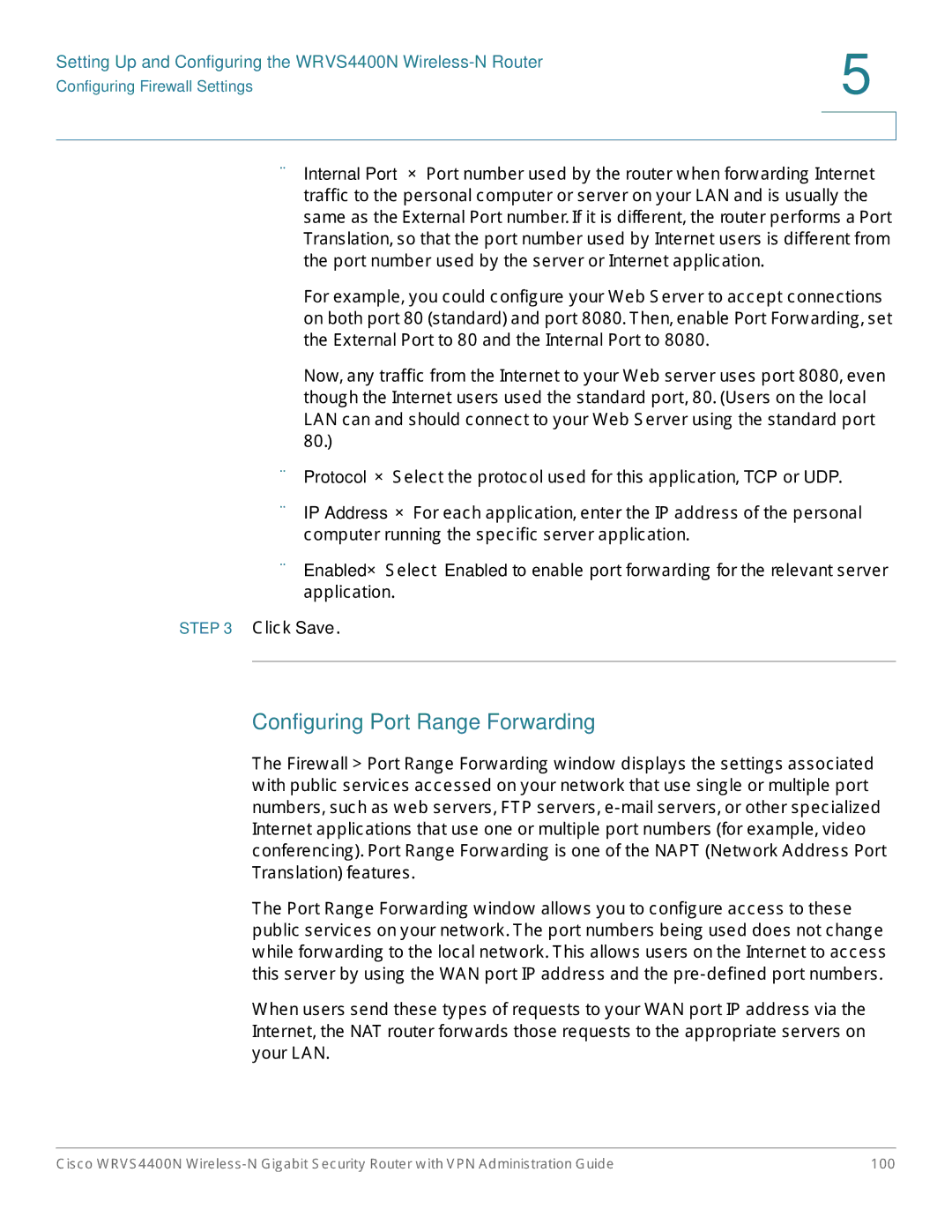
Setting Up and Configuring the WRVS4400N | 5 |
| |
Configuring Firewall Settings |
|
|
|
|
|
•Internal
For example, you could configure your Web Server to accept connections on both port 80 (standard) and port 8080. Then, enable Port Forwarding, set the External Port to 80 and the Internal Port to 8080.
Now, any traffic from the Internet to your Web server uses port 8080, even though the Internet users used the standard port, 80. (Users on the local LAN can and should connect to your Web Server using the standard port 80.)
•
•IP
•
STEP 3 Click Save.
Configuring Port Range Forwarding
The Firewall > Port Range Forwarding window displays the settings associated with public services accessed on your network that use single or multiple port numbers, such as web servers, FTP servers,
The Port Range Forwarding window allows you to configure access to these public services on your network. The port numbers being used does not change while forwarding to the local network. This allows users on the Internet to access this server by using the WAN port IP address and the
When users send these types of requests to your WAN port IP address via the Internet, the NAT router forwards those requests to the appropriate servers on your LAN.
Cisco WRVS4400N | 100 |
